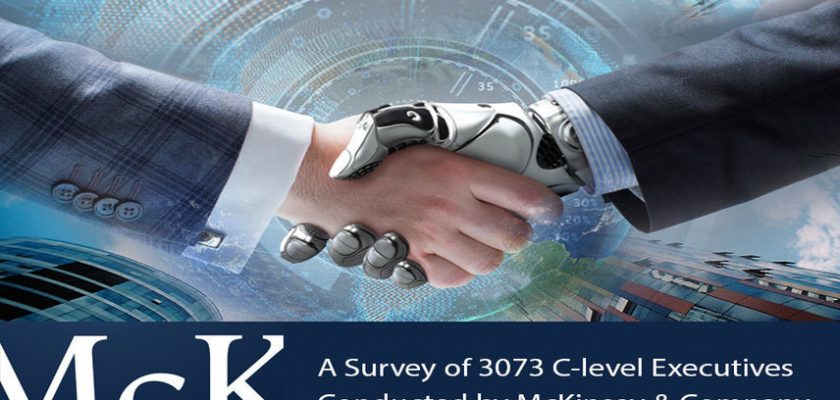Undoubtedly artificial intelligence has begun to transform the world. But we know it still has to go a long away, but we are able to see its growth signs in the form of personal assistants and chatbots. McKinsey & Company recently conducted a survey on the early-adopters of AI and the survey revealed many insights pertained to their strategies in AI, the outcomes they received, and their future strategies on the same AI. Those insights would really be a great deal for companies who are new to the AI world.
Before sharing those insights, let’s have a look on the current scenario of the AI world. After decades of extravagant promises and half-baked applications, artificial intelligence (AI) has finally started to deliver real-life benefits to forward-thinking businesses. Forward-thinking retailers are leveraging AI-powered robots to drive their warehouses and automatically order stock when inventory runs low. Automakers are leveraging the same technologies to build self-driving cars (this you know very well). On the other hand, utilities use AI to forecast electricity demand.
This path-breaking happenings are being powered by the growing computer power, algorithms and AI models, and a growing amount of user data.
1.Don’t put the onus solely on technical leaders – bring in business leaders as well
Since it is a technology that is still in nurturing stage, putting the complete responsibility of building AI solutions on functional leaders in IT, digital, or innovation doesn’t bring intended outcomes. There is a need of intervention of business leaders in the same. So make sure AI initiatives are assessed and co-led by both business and technical leaders.
2.Start with a small
Since the technology has to get matured, enterprises should consider a portfolio-based approach to AI adoption across three time horizons:
Short term: Focus on use cases that are already prevalent across industry verticals, at least in your industry, and extend them across the enterprise to drive meaningful bottom-line value.
Medium-term: Experiment on emerging yet immature technologies like deep learning video recognition to reap their benefits in business use cases and scale them upon the benefits you earned.
Long-term: In this case, don’t do it in-house unless until you understood its roadmap. It is better to collaborate with a third party (AI company like FuGenX Technologies or other similar companies) to solve a high-impact use case like how augmented human decision making replaces key knowledge worker role.
3.Focus on only relevant technologies for the required AI use cases – machine learning is not right fit for everything
Machine learning is a subfield of AI that has been loud enough to become a leading AI technology. But that is not the right for every AI use cases. For example, an AI technology that is used to improve productivity at call centers wouldn’t be a right technology to use at identifying credit card payments fraud. So good understanding of technology from the ground helps you gain intended returns on the investment.
Conclusion:
Yes, AI is the future of the tech world, after mobile. Considering this, forward-thinking businesses are increasingly ardent to harness the power of it. TacoBell, which uses an AI-powered chatbot to improve customer experience and other similar companies have started to taste the success of AI. But it is not late for companies who are still being driven by previous digital disruptions. But as quoted above, when you are new to the field, it is better to collaborate with a company who are already experts in the field. There are many mobile app development companies who turned AI companies or newly born dedicated AI companies, who can help you build result-driven AI solutions to achieve the first-mover advantage.

Go to comments